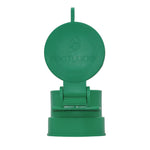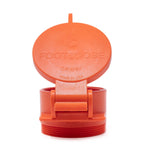You have no items in your shopping cart.
Nothing guarantees comfort quite like an RV. A fully loaded camper van can keep an entire family clean, happy, and healthy through even the worst weather conditions, giving its owners unlimited freedom to choose when and where to camp.
But simply choosing a dependable, high-quality RV isn’t always enough. Many of the extra components you add to your RV play a critical role in ensuring the comfort and convenience of your next trip.
Take your RV’s sewer hose, for example. Your RV’s toilet is part of an entire waste management system. If any part of that system breaks down, it means a messy end to a ruined vacation. The sewer hose is one of the most critical parts of that system.
What Exactly Does the RV Sewer Hose Do?
The sewer hose is a large, flexible tube made of a durable material that transports waste from your RV’s black and gray water tank to a campground sewage inlet.

Dumping your RV’s gray and black water is a delicate task that merits extra attention. Even the smallest mistake can result in spillage, and even the smallest spillage can ruin a vacation.
Characteristics that RV owners should look for when buying RV sewer hoses include:
1.Durability
- The more frequently you use your RV, the more you will have to use your RV sewer hose. And the more you plan on using the hose, the more important its durability becomes. Most sewer hoses are made of plastic, with higher-quality hoses using sturdier formulations. Hose thickness is measured in mils (one-thousands of an inch), and a thickness of more than 20 mils is recommended.
- Resistance to crushing is another important factor. Bystanders and campsite guests may accidentally step on your RV sewer hose while it is pumping waste. If the hose cannot support the weight, it may rupture. That’s an instant vacation-ruiner.
- Outlet fittings and elbow adaptors are also important parts of the durability equation. Bad fittings and adaptors may leak. Even a tiny leak can be problematic, as it will result in a foul odor.
2. Storage Options
- Depending on the specifics of your RV, you may have multiple options for storing your sewer hose. Some vehicles offer storage space in the bumper, for example. The amount of space you have available can limit your options when it comes to sewer hose length and construction material.
- Most RVs with bumper storage have a 4x4-inch opening. This means that a sewer hose with 90-degree fittings must have detachable ends if it is to fit in that space. Otherwise, the opening is too small to fit the entire hose in – and you won’t want to keep it inside your cabin or near anything else you regularly use.
- Hose construction can also impact storage. Corrugated sewer hoses have a collapsible accordion structure. This can make the hose much easier to store, but it may come at the cost of durability.
3. Cost
- Cheaper hoses generally have shorter lifetimes than more expensive options. They are also more prone to accidental breakage, spillage, and leaks. While many people use inexpensive sewer hoses, the general consensus among experienced RV owners is that this should be a top-shelf component. The peace of mind that comes from purchasing a high-quality hose is well worth the cost.
- Decent RV sewer hoses typically cost anywhere between $40 and $150. Anything lower or higher than this range should be eyed with a healthy degree of suspicion.
4. Outlets and Fittings
- Most RVs are equipped with a standardized waste outlet. However, older vehicles may have different outlet sizes that require the use of adaptors to ensure a tight, leak-free fit. If you are buying a sewer hose for an older vehicle, you should factor the cost of high-quality fittings and outlet adaptors into the price you’re willing to pay.
-
Additionally, you should consider the ease of use and installation for additional fittings.
For example, a foot-operated sewer cap offers a superior user experience compared to a cap that requires you to get down on your hands and knees. These caps typically require a 90-degree elbow outlet, which requires additional space.

- Other outlets and fitting shapes may not offer the same degree of usability. Traditional bayonet-style fittings can be hard to connect and disconnect, for example. This might make the process of dumping your RV’s gray and black water tanks more difficult than it needs to be.
5. Length
- The length of your RV is the main factor that influences how long your sewer hose should be. This is because some campgrounds will require you to park your RV in a particular place, which gives you a certain distance to the campground sewer cap. If your RV is longer than the hose is, you won’t be able to reach it easily.
- Most sewer hoses come in 15-foot and 20-foot lengths. You can also buy extensions for your sewer hose that can add another 10-foot section to its existing length.
Sewer Cap Compatibility Is Crucial
Not all fittings and sewage caps are compatible. Depending on your location and the type of RV you own, you may need to use adaptors to ensure sewage hose compatibility. Campgrounds that use Enviro Design FootLoose sewer caps are compatible with all generic and name-brand sewer hose fittings.
Finding the right sewer hose kit is a crucial part of preparing for successful RV vacations. When you ensure proper waste management, you ensure the ease and convenience of an all-important part of your trip.










